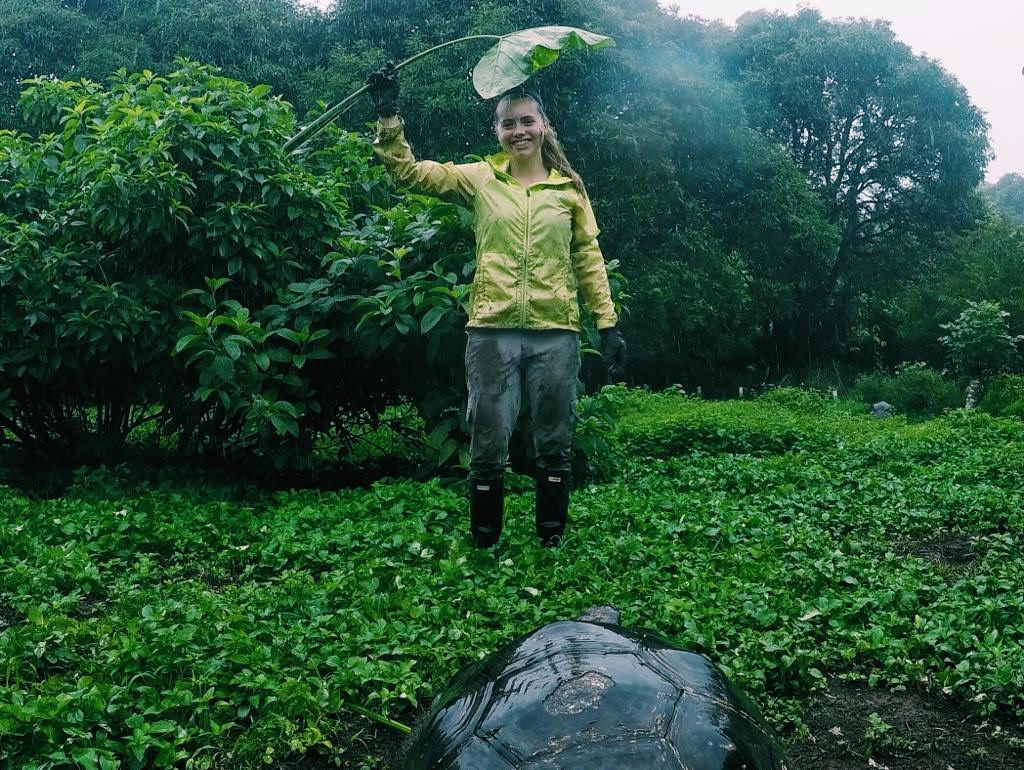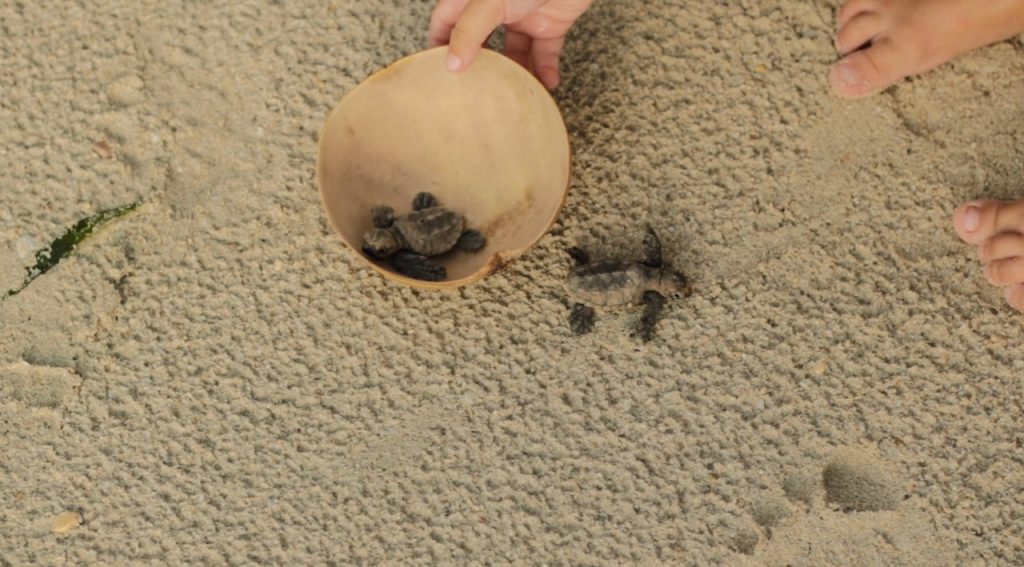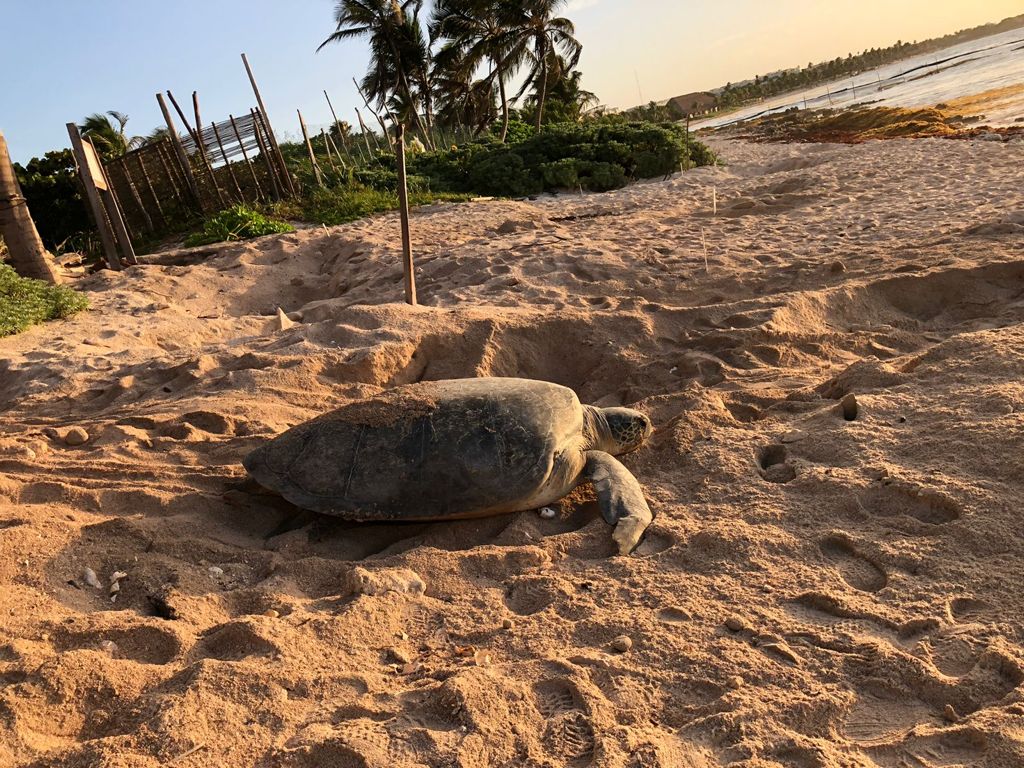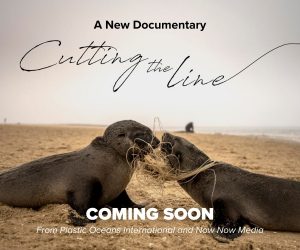Caring For A Deservingly Revered Species
Growing up in Rochester, New York, at least a five-hour drive from the closest beach, my relationship with the ocean did not extend much past the occasional viewing of a nature documentary. The marine life I saw on the television was exquisite, but I never imagined the possibility of witnessing these animals in real life, watching them perform the behaviors that gripped filmmakers’ attention in the first place.
That all changed when I spent a month in the Mexican state of Campeche in the summer of 2021. On two separate beaches, I was blessed with the opportunity to experience sea turtle nesting season and all of the work that goes on behind the scenes to ensure the continued survival of these deservingly revered species.

Sophie Liebel in the field with her revered species of choice.
My first encounter came at Seybaplaya, a small community about 30 minutes south of the city of Campeche. The beach there is a nesting site for the Hawksbill turtle, a critically endangered species. During nesting season, a group of volunteers from Ninth Wave Mexico, working in close association with Plastic Oceans, must monitor the beach every night to keep track of new nests and collect data for biologist Luis Antonio Gongora Dominguez, so he can record valuable information for years to come. My first night watch shift began at 10 pm, and I awoke from my hammock on the beach with little idea of how the night would progress.

Hawksbill sea turtle hatchlings in Seybaplaya, Mexico.
After 20 minutes of walking the beach, a volunteer spotted some distinct markings in the sand. Being new to this work, I did not immediately recognize the prints as turtle tracks, but sure enough in a grassy patch near the edge of the beach appeared a giant Hawksbill, turning up soil with its back legs. We approached silently with a red night light, making us undetectable to the turtle. The hole she had created was profound, about 60 cm deep. After what seemed like hours of digging, the turtle stopped suddenly, resting above the nest. This is when the laying process began, and I was tasked with counting the eggs, 148 in total, as the other volunteers took her measurements. After her nest was complete, the turtle began the long process of covering the disruption she had made, returning to the ocean after ensuring not a trace of her nest could be found. To discreetly mark her nest, we placed a discarded bottle upside down in the sand where her nest lay buried, making use of the waste that littered the beach so that the nest was undetectable only to us – no member of the public would think twice to look at what was seemingly just another bit of trash. The whole process lasted multiple hours, and after ensuring no more turtles had surfaced in the meantime, we returned to our hammocks to rest before the next shift.
At 4 am I was awoken again for my second patrol, adrenaline and excitement masking any exhaustion I should’ve felt. On this patrol we saw and recorded the movements of a few more turtles, and I was eventually given the task of monitoring a turtle we found in the midst of the nest construction process. As we watched, the turtle struggled to find a place to nest, digging multiple holes after encountering a rock in her first location and laboring to sift through the mounds of plastic and garbage that visitors had carelessly discarded on the beach.
After struggling for multiple hours, encountering physical obstacles and various mounds of plastic blocking her way, the turtle returned to the sea without laying her eggs. Unfortunately, the reality of sea turtle nesting is that there are often more failures than successes. In my other turtle patrol experience in Akumal, Quintana Roo, working with the Ecological Center of Akumal, I witnessed how these creatures face many barriers to successfully nesting. These include confusing lights and noise from the hotels that sprawl along the coastline, short widths of beach blocked by human development, and curious tourists that scare turtles away with their presence. Despite these challenges, and with the help of a dedicated conservation team, the beaches of Akumal boast almost 300 turtle nests.

A Green sea turtle in Akumal during nesting season. Photo: Centro Ecologico Akumal.
Witnessing the nesting season at Seybaplaya and Akumal was fascinating and beautiful, and I left the experience with a new appreciation for and an acute understanding of the sea turtle life cycle and the challenges these creatures face. At both locations, human pollution and disruption made nesting an unnecessarily hazardous process for the turtles. Most tourists and beach visitors were not even aware that the beaches they enjoyed and oftentimes exploited at night become a crucial nesting site for these fascinating creatures, who have been performing this ritual since the time of the dinosaurs.
Reading this, you might be as far away from the ocean as I once was, wondering how your decisions have any impact on ocean ecosystems, and specifically marine animals such as turtles. In reality, your choices about what products you use and buy and where and with whom you travel have a direct impact on not only sea turtles, but all of the creatures that spend their life cycle in our oceans and coastlines. In Seybaplaya and Akumal alone, the dedicated efforts of a small group of conservationists to conserve the beaches and raise public awareness have resulted in successful stewardship of hundreds of nests, many of which have already begun to produce hatchlings. The exciting thing is, even thousands of miles away, you can have just as significant of an impact as these conservationists. By limiting waste production and traveling with accommodations and services that do not disrupt, and even protect, coastlines and wildlife, you can be a part of the solution, bringing your world closer to the world of sea turtles than you might even know.
Sophie Liebel is an environmentalist from New York State. She spent the summer of 2021 working with Ninth Wave Mexico across BlueCommunities projects in the Yucatan Peninsula.

